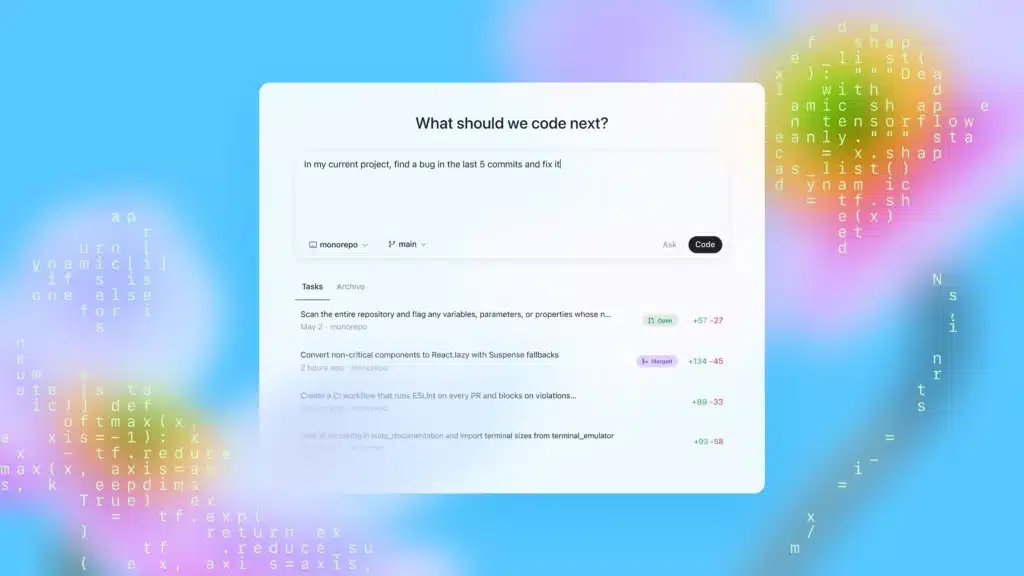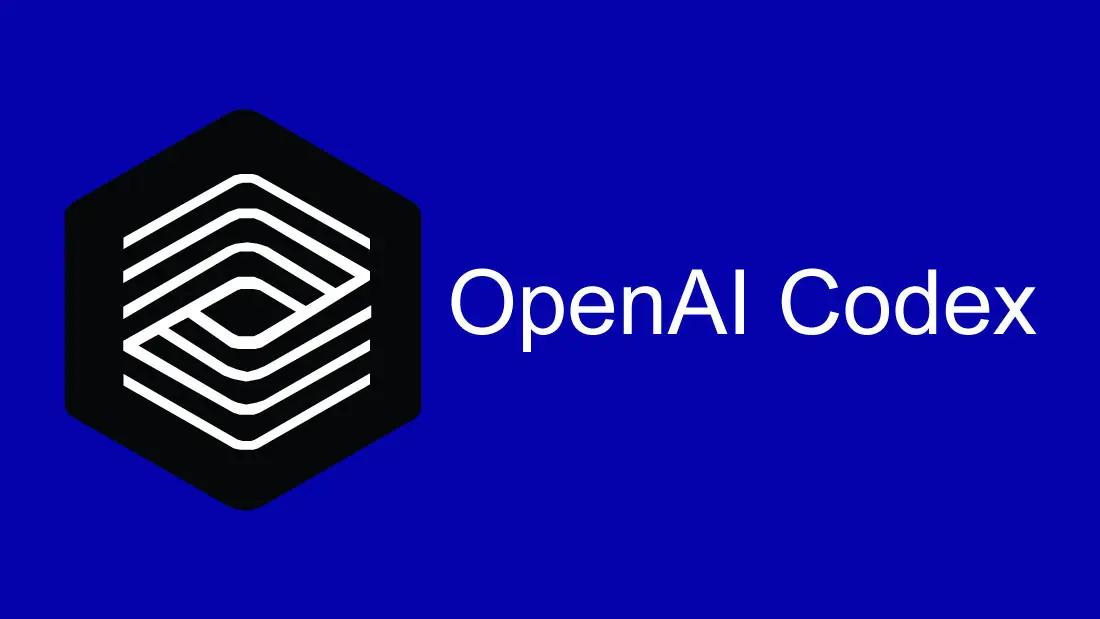Codex OpenAI merupakan lompatan maju yang signifikan dalam rekayasa perangkat lunak yang dibantu AI, memadukan penalaran tingkat lanjut dengan perkakas praktis untuk menyederhanakan alur kerja pengembangan. Diluncurkan sebagai pratinjau pada 16 Mei 2025, Codex memberdayakan pengembang untuk mendelegasikan tugas pengodean yang kompleks—mulai dari implementasi fitur hingga perbaikan bug—ke agen AI berbasis cloud yang dioptimalkan khusus untuk rekayasa perangkat lunak. Mulai 3 Juni 2025, Codex telah memperluas ketersediaannya bagi pengguna ChatGPT Plus, yang memungkinkan akses yang lebih luas ke kemampuannya dalam antarmuka ChatGPT yang sudah dikenal. Artikel ini merangkum berita terbaru dan menyediakan panduan langkah demi langkah tentang penggunaan Codex secara efektif dalam alur kerja pengembangan Anda.
Apa itu OpenAI Codex dan mengapa itu penting?
OpenAI Codex adalah asisten pengkodean AI "agentik" yang beroperasi di cloud, didukung oleh model codex-1—versi khusus dari model penalaran o3 yang disetel dengan baik untuk tugas-tugas rekayasa perangkat lunak. Tidak seperti alat pelengkapan otomatis tradisional, Codex dapat secara otonom menjalankan permintaan pemrograman multi-langkah: menulis fitur-fitur baru, menganalisis dan melakukan refaktor kode yang ada, mendiagnosis dan memperbaiki bug, dan bahkan mengusulkan dan mengelola permintaan tarik. Setiap tugas berjalan dalam lingkungan sandboxed terisolasi yang dimuat sebelumnya dengan repositori Anda, memastikan bahwa perubahan yang digerakkan AI dapat dilacak dan direproduksi melalui log terminal dan keluaran pengujian. Tingkat otonomi dan akuntabilitas ini menandai pergeseran paradigma, karena pengembang sekarang dapat memindahkan alur kerja pengkodean rutin atau kompleks ke Codex, membebaskan mereka untuk fokus pada desain dan arsitektur tingkat tinggi.
Apa yang membedakan Codex dari alat pengkodean AI lainnya?
Codex menonjol melalui desain agennya: tidak hanya menyarankan potongan kode—tetapi juga menjalankan tugas secara menyeluruh dari awal hingga akhir. Dengan mengintegrasikan pemahaman kode yang mendalam dengan kemampuan menjalankan pengujian, linter, dan pemeriksa tipe, Codex menyempurnakan outputnya secara berulang hingga lulus kriteria validasi. Eksekusi sandboxed-nya memastikan bahwa setiap tindakan dicatat, sehingga memungkinkan tim untuk mengaudit dan meninjau perubahan dengan mudah. Lebih jauh lagi, Codex mendukung beberapa model, yang menawarkan fleksibilitas dalam menyeimbangkan kecepatan, kreativitas, dan ketepatan berdasarkan kebutuhan proyek.
Bagaimana Anda dapat mengakses OpenAI Codex hari ini?
Melalui ChatGPT Plus
Mulai 3 Juni 2025, OpenAI memperluas akses ke Codex bagi pelanggan ChatGPT Plus, menghapus eksklusivitas sebelumnya untuk tingkatan Pro dan Enterprise. Pengguna Plus kini dapat memanggil Codex langsung di bilah sisi ChatGPT untuk menangani permintaan pengodean secara real time.
Melalui Codex CLI (sekarang dalam Rust)
OpenAI juga menawarkan antarmuka baris perintah mandiri untuk Codex—yang awalnya berbasis Node.js/TypeScript—yang baru-baru ini ditulis ulang dalam Rust untuk meningkatkan kinerja dan keamanan. Implementasi Rust menghilangkan dependensi eksternal, mempercepat waktu startup, dan memberikan jaminan keamanan asli, sehingga ideal untuk integrasi ke dalam alur kerja CI/CD.
Bagaimana cara mengakses Codex dalam ChatGPT?
Mengakses Codex mudah bagi pelanggan ChatGPT yang memenuhi syarat. Mulai awal Juni 2025, Codex tersedia untuk pengguna ChatGPT Pro, Enterprise, Team, dan Plus melalui antarmuka bilah sisi khusus.
Apa saja persyaratan berlangganan?
- Obrolan GPT Plus: Tersedia untuk pengguna Plus sejak 3 Juni 2025, memungkinkan pengembang individu bereksperimen dengan alur kerja pengkodean agen.
- ChatGPT Pro/Tim/Perusahaan: Diluncurkan dalam pratinjau pada 16 Mei 2025, menawarkan fitur kolaborasi tingkat lanjut untuk organisasi dan tim yang lebih besar.
Pastikan akun Anda ditingkatkan ke salah satu tingkatan ini; Anda akan melihat opsi “Codex” muncul di bilah sisi ChatGPT setelah kelayakan dikonfirmasi.
Bagaimana cara mengaktifkan Codex di ruang kerja saya?
- Buka ChatGPT dan cari bilah sisi di sebelah kiri.
- Klik pada "Naskah kuno" tab (di samping “Obrolan” dan “Plugin”).
- Otorisasi akses repositori dengan menghubungkan akun GitHub Anda (atau penyedia Git yang didukung).
- Pilih repositori dan cabang tempat Codex ingin beroperasi—ini akan menyediakan lingkungan sandboxed yang sudah dimuat sebelumnya dengan basis kode Anda.
Bagaimana cara menetapkan tugas pengkodean ke Codex?
Antarmuka Codex dirancang untuk kesederhanaan: Anda mengeluarkan perintah dalam bahasa alami, dan agen mengeksekusinya.
Bagaimana alur kerja langkah demi langkahnya?
- Pilih “Kode” atau “Tanya”
- Kode: Gunakan ini ketika Anda ingin Codex menulis atau mengubah kode.
- Meminta: Gunakan ini saat Anda memerlukan penjelasan, dokumentasi, atau wawasan tingkat tinggi tentang basis kode Anda.
- Ketik perintah Anda
- Contoh: “Terapkan autentikasi pengguna menggunakan JWT, dengan login email dan kata sandi, dan simpan token di Redis.”
- Klik “Jalankan”
- Codex membuat kotak pasir, mengeksekusi permintaan, menjalankan pengujian, dan mengembalikan diff bergaya permintaan tarik.
- Tinjau dan Gabungkan
- Periksa perubahan, log terminal, dan hasil pengujian. Jika memuaskan, gabungkan permintaan penarikan ke cabang target Anda.

Praktik terbaik apa yang memastikan penggunaan Codex yang efektif?
Meskipun Codex dapat menangani tugas-tugas kompleks secara mandiri, mengikuti panduan berikut akan memaksimalkan efektivitasnya:
Bagaimana saya harus menyusun perintah supaya jelas?
Kinerja Codex bergantung pada perintah yang terstruktur dengan baik. Dimulai dengan komentar tingkat tinggi (misalnya, // Generate a function to parse JSON into a Python data class) diikuti oleh kode kerangka atau petunjuk jenis apa pun. Hindari ambiguitas dengan menentukan bahasa, panduan gaya, atau kasus pengujian.
- Bersikaplah eksplisit: Tentukan masukan, keluaran, dan kasus tepi dengan jelas.
- Membagi tugas menjadi subtugas: Untuk proses yang memiliki beberapa langkah, keluarkan perintah berurutan—misalnya, “Pertama, buat REST API untuk mengelola produk,” lalu “Tambahkan pengujian unit untuk titik akhir produk.”
- Gunakan contohBerikan contoh pasangan masukan/keluaran atau lihat pola kode yang ada di repo Anda.
Bagaimana cara mengelola keamanan dan kepatuhan?
- Audit kotak pasir: Memanfaatkan pencatatan bawaan Codex untuk meninjau setiap perintah yang dieksekusi.
- Kontrol akses: Batasi akses repositori ke cabang yang diperlukan saja.
- Proses review:Perlakukan permintaan penarikan yang dihasilkan Codex seperti yang lainnya—gabungkan tinjauan sejawat dan pemeriksaan CI otomatis.
Penanganan dan Mitigasi Kesalahan
Bahkan dengan perintah yang tepat, Codex dapat menghasilkan keanehan—loop yang tidak efisien atau kesalahan yang tidak konsisten. Terapkan lapisan penanganan kesalahan:
- Linter Otomatis:Integrasikan alat seperti ESLint atau Pylint dalam alur kerja CI Anda.
- Validasi Berbasis Uji: Memerlukan agar semua kode yang dihasilkan lulus rangkaian pengujian yang ada sebelum digabungkan.
- Tinjauan Manusia: Perlakukan saran Codex sebagai “draf pertama” yang mendapat manfaat dari pengawasan pengembang.
Bagaimana Codex terintegrasi dengan jaringan CI/CD yang ada?
Mengintegrasikan keluaran Codex ke dalam alur kerja integrasi dan penerapan berkelanjutan Anda memastikan pengiriman yang lancar.
Titik integrasi apa saja yang tersedia?
- Tarik Otomatisasi Permintaan: Codex membuka PR secara otomatis; konfigurasikan CI Anda untuk menjalankan build, pengujian, dan pemindaian keamanan pada PR ini.
- Pemberitahuan Webhook: Berlangganan acara Codex (tugas dimulai, diselesaikan, PR dibuka) melalui webhook untuk terus memberi informasi kepada tim di Slack atau Teams.
- Pembuatan Catatan Perubahan: Codex dapat membuat draf catatan perubahan berdasarkan perbedaan komit; konfigurasikan untuk memperbarui berkas catatan perubahan Anda secara otomatis.
Dengan menggabungkan kekuatan agen codex-1 dengan lingkungan eksekusi sandbox yang tangguh dan integrasi yang lancar ke dalam jalur ChatGPT dan CI/CD, OpenAI Codex menawarkan pendekatan transformatif untuk rekayasa perangkat lunak. Apakah Anda seorang pengembang individu yang ingin mempercepat pengiriman fitur atau bagian dari tim perusahaan yang berusaha untuk mendapatkan kualitas kode yang konsisten, memahami cara memanfaatkan kemampuan Codex akan menjadi penting dalam lanskap pengembangan yang ditingkatkan AI yang terus berkembang.
Mulai
CometAPI menyediakan antarmuka REST terpadu yang menggabungkan ratusan model AI—di bawah titik akhir yang konsisten, dengan manajemen kunci API bawaan, kuota penggunaan, dan dasbor penagihan. Daripada harus mengelola beberapa URL dan kredensial vendor.
Pengembang dapat mengakses API chatGPT seperti ini API GPT-4.1 itu Batas waktu publikasi artikelmelalui API KometUntuk memulai, jelajahi kemampuan model di tempat bermain dan konsultasikan Panduan API untuk petunjuk terperinci. Sebelum mengakses, pastikan Anda telah masuk ke CometAPI dan memperoleh kunci API. API Komet menawarkan harga yang jauh lebih rendah dari harga resmi untuk membantu Anda berintegrasi.
Lihat Juga Claude Code vs OpenAI Codex: Mana yang Lebih Baik?



